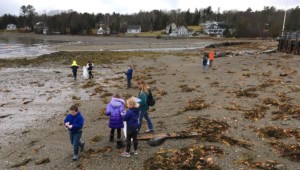From Place to Service
 The shift from print-based learning to digital learning is a big deal, but more fundamental is the shift from institution-centric education to student-centered learning.
The shift from print-based learning to digital learning is a big deal, but more fundamental is the shift from institution-centric education to student-centered learning.
Rich Halverson spoke about Rethinking Education at SREB last month. Below is a list adapted from Rich’s book about the10 shifts that change everything (a summary ended up in Getting Smart, now on Amazon).
| Factor | From | To | To |
| Responsibility | Parents | State | Individuals/parents |
| Expectations | Social reproduction | Success for all | Individual choice |
| Aspirations | Practical sills | Disciplinary knowledge | Learning how to learn |
| Content | Books | Textbook | Learning objects |
| Pedagogy | Apprenticeship | Didacticism | Interaction |
| Assessment | Observation | Testing | Embedded assessment |
| Grouping | Mixed-age | Age cohorts | Individual progress |
| Location | Home | School | Anywhere |
| Culture | Adult culture | Peer culture | Mixed-age culture |
| Relationships | Personal bonds | Authority figures | Social networks |
(Adapted from Rethinking Education in the Age of Technology, Collins & Halverson)
The 10 shifts describe, at a high level, the emerging user experience. But it’s also interesting to think about the implications for delivery. Last week at the Policy Innovators in Education conference I described it as the shift from school as place to learning as a service.
Rick Hess (who was on the same PIE-Net panel) calls it unbundling the schoolhouse. Six months ago I wrote about the 10 dimensions of school as a service and I think it still does a reasonable job of describing the emerging SaaS architecture.
For most students, learning rooted in a place will remain important. In addition to a connection to a social fabric, a place called school offers integration and application opportunities, connection to community services, and extracurricular activities. Good schools add a valuable intangible asset—a culture of potential and achievement.
As learning becomes a collection of blended services (some online, some onsite), we will need to invent new ways of creating culture and coherence–for learners of all ages.
Also see: Smart World






0 Comments
Leave a Comment
Your email address will not be published. All fields are required.